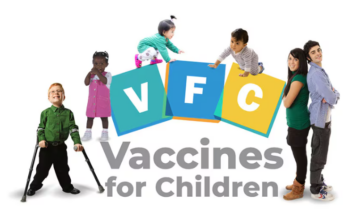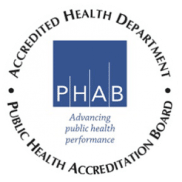
The Vaccines for Children (VFC) Program provides vaccines to children whose parents or guardians may not be able to afford them. Serving as one of the nation’s most important contributors to eliminating health disparities, the program helps ensure that all children have a better chance of getting their recommended vaccinations on schedule and staying healthy.
History of the VFC Program– In 1989 – 1991, a measles epidemic in the United States resulted in tens of thousands of cases of measles and hundreds of deaths. In response to this measles epidemic, Congress passed the Omnibus Budget Reconciliation Act (OBRA) on August 10, 1993, creating the VFC Program. The VFC Program became operational on October 1, 1994.
Vaccines provided through the VFC Program must be administered according to the guidelines outlined by the Advisory Committee on Immunization Practices (ACIP) in VFC Program resolutions. The resolutions represent the rules that providers must follow for administering each specific vaccine under the VFC Program.
The Office of Management and Budget (OMB) approves funding for the VFC Program, then allocates the funds through the Centers for Medicare & Medicaid Services (CMS) to CDC. After receiving the funds, CDC buys the vaccines at a discount and distributes them to VFC Program providers at the direction of awardees (i.e., the 61 state, local, and territorial immunization programs who receive operational funding from the CDC to implement and oversee their VFC Programs).
CHILDREN WHO ARE ELIGIBLE FOR THE VFC PROGRAM
Children who are 18 years of age or younger who meet one or more of the following categories:
- American Indian or Alaska Native
- Medicaid-eligible
- Uninsured
- Underinsured
- “Underinsured” is defined as a child:
- Who has health insurance, but the coverage does not include vaccines.
- Whose health insurance covers only selected vaccines (VFC Program-eligible for non-covered vaccines only).
- Whose health insurance has a fixed dollar limit or cap for vaccines (VFC Program-eligible once fixed dollar amount or cap is reached).
- “Underinsured” is defined as a child:
PARENT/GUARDIANS

There is no cost for the vaccines given by VFC Program providers to eligible children. This means that no one can charge a fee for the vaccine itself.
Fees That a VFC Program Provider May Charge
Although there is no charge for VFC Program vaccines, the law does allow your healthcare provider to charge what is called an “administration fee”. An administration fee is similar to a patient’s co-pay in that it helps providers offset their costs of doing business. Providers have the option to charge what they feel is fair, which could range from no charge at all, up to the maximum amount allowed by their state. This fee differs from state to state. Contact your CMS Regional Medicaid office for questions about the administration fee.
You Do Not Need Proof of a Child’s Eligibility
You do not have to show any proof that your child is eligible for free vaccines using the VFC Program. However, your doctor is required to ask and document the following:
- Is your child on Medicaid?
- Does your child have any health insurance coverage? Does the insurance cover vaccines?
- Is your child of American Indian or Alaskan Native heritage?
Many doctors will already have this information in your child’s medical record or as a part of normal business records, but if your child’s insurance or Medicaid status changes, you need to inform the doctor’s office of those changes.
If you are unable to pay for your child’s vaccines, contact your Local Health Unit to schedule an appointment. Click on the provided link for your Local Health Unit location: Local Health Units.
Resources
- Vaccines for Children
- Vaccines Provided by the VFC Program
- Immunization Schedule
- Advisory Committee on Immunization Practices (ACIP)
- History of the VFC Program
- Omnibus Budget Reconciliation Act (OBRA)
- Local Health Units
- CMS Regional Medicaid office
Contact Us
ADH Immunizations VFC
4815 West Markharm Street, Slot 48
Little Rock, AR 72205
Phone: 501-537-8969


